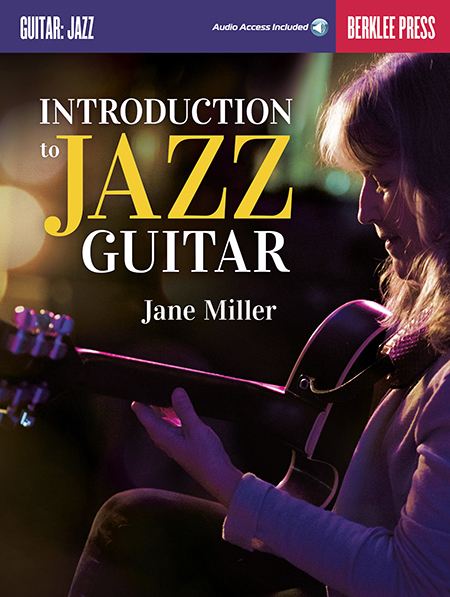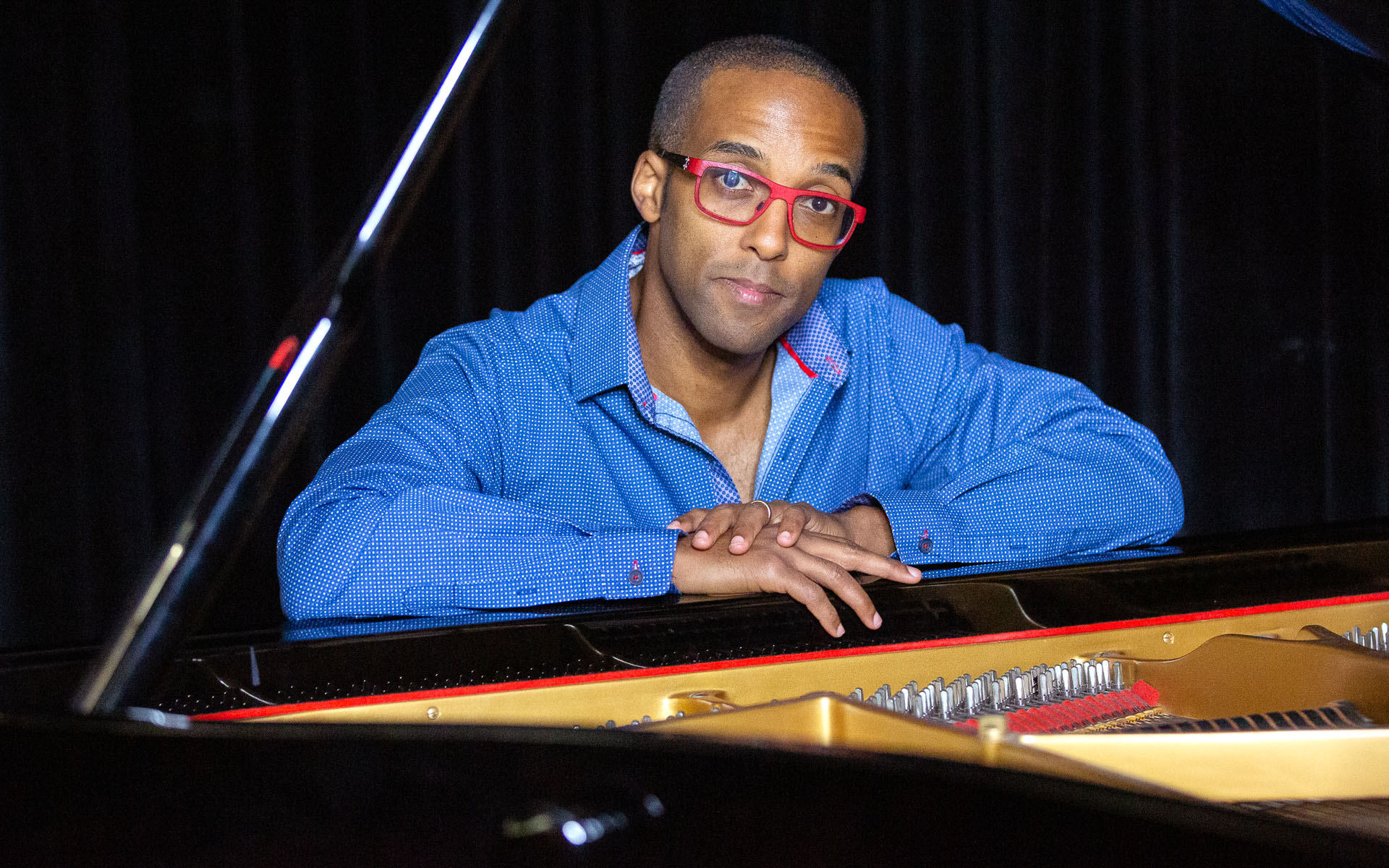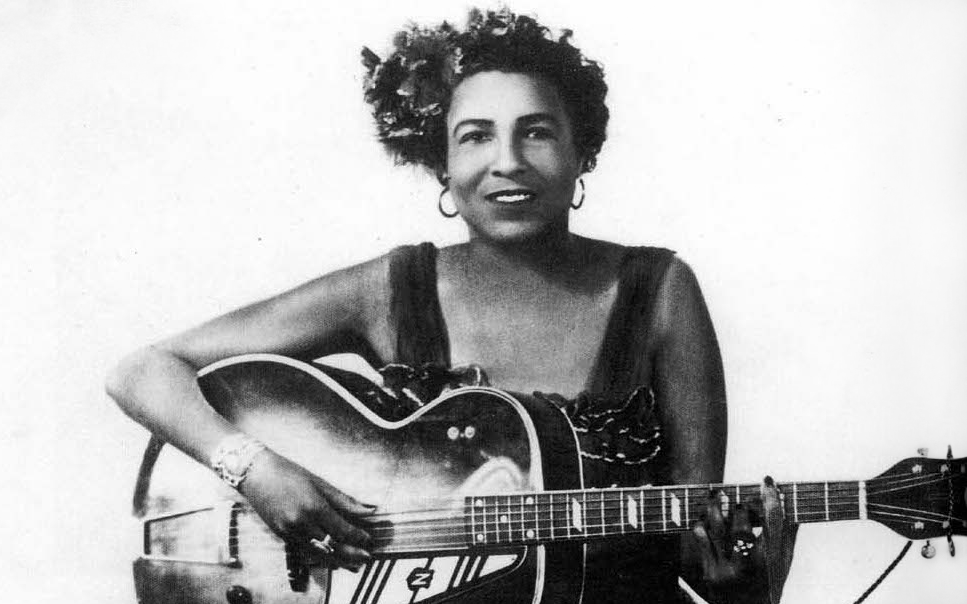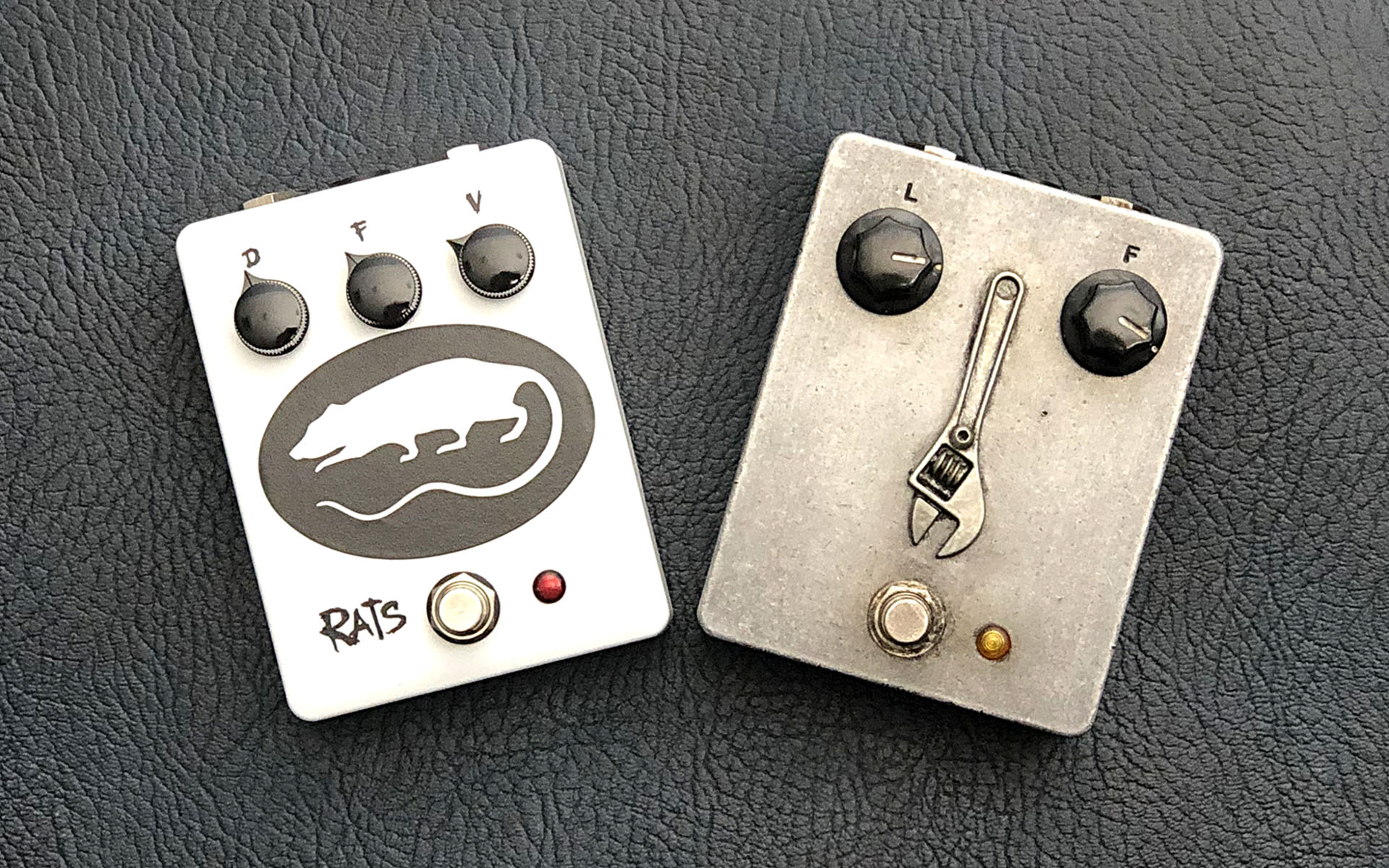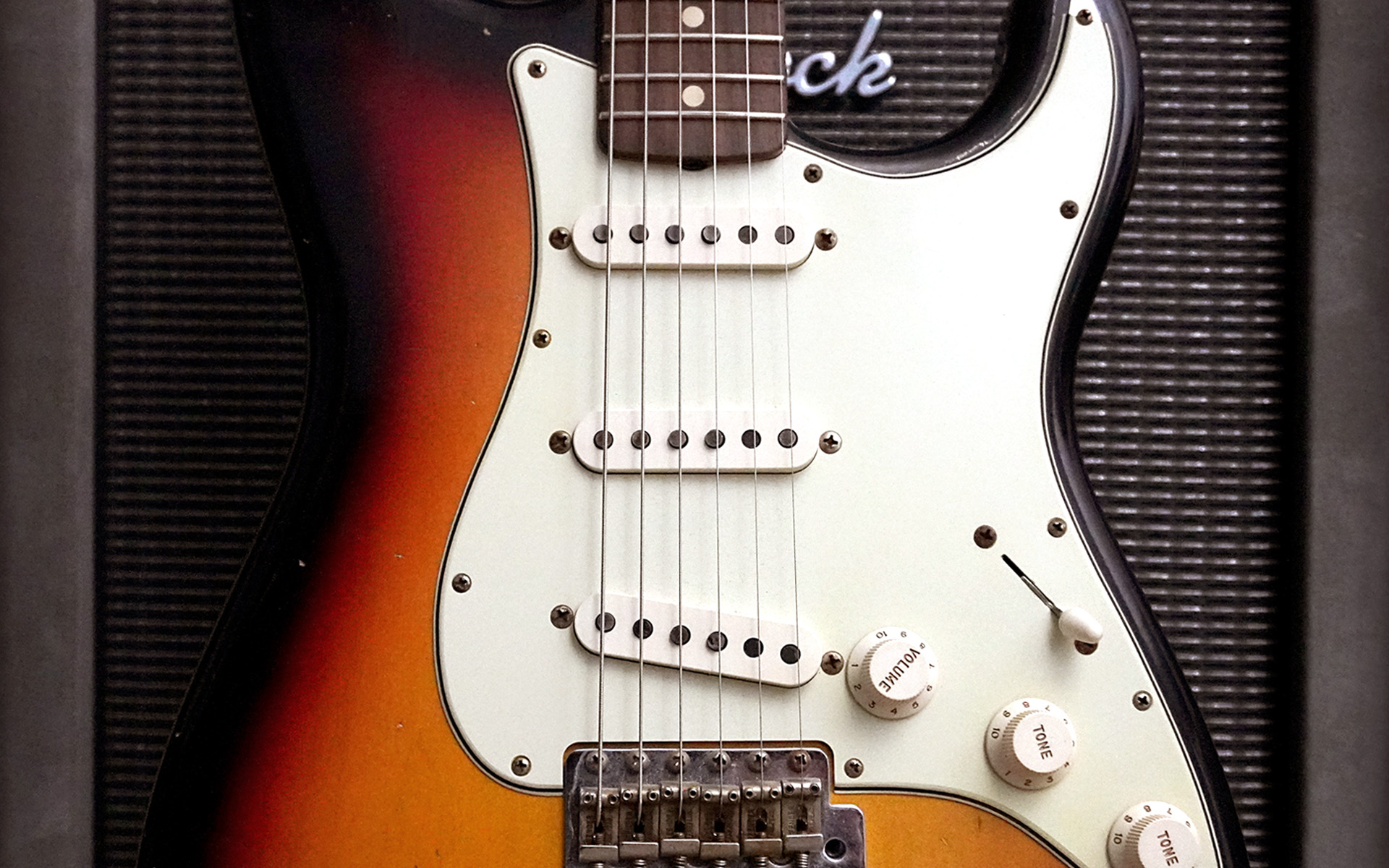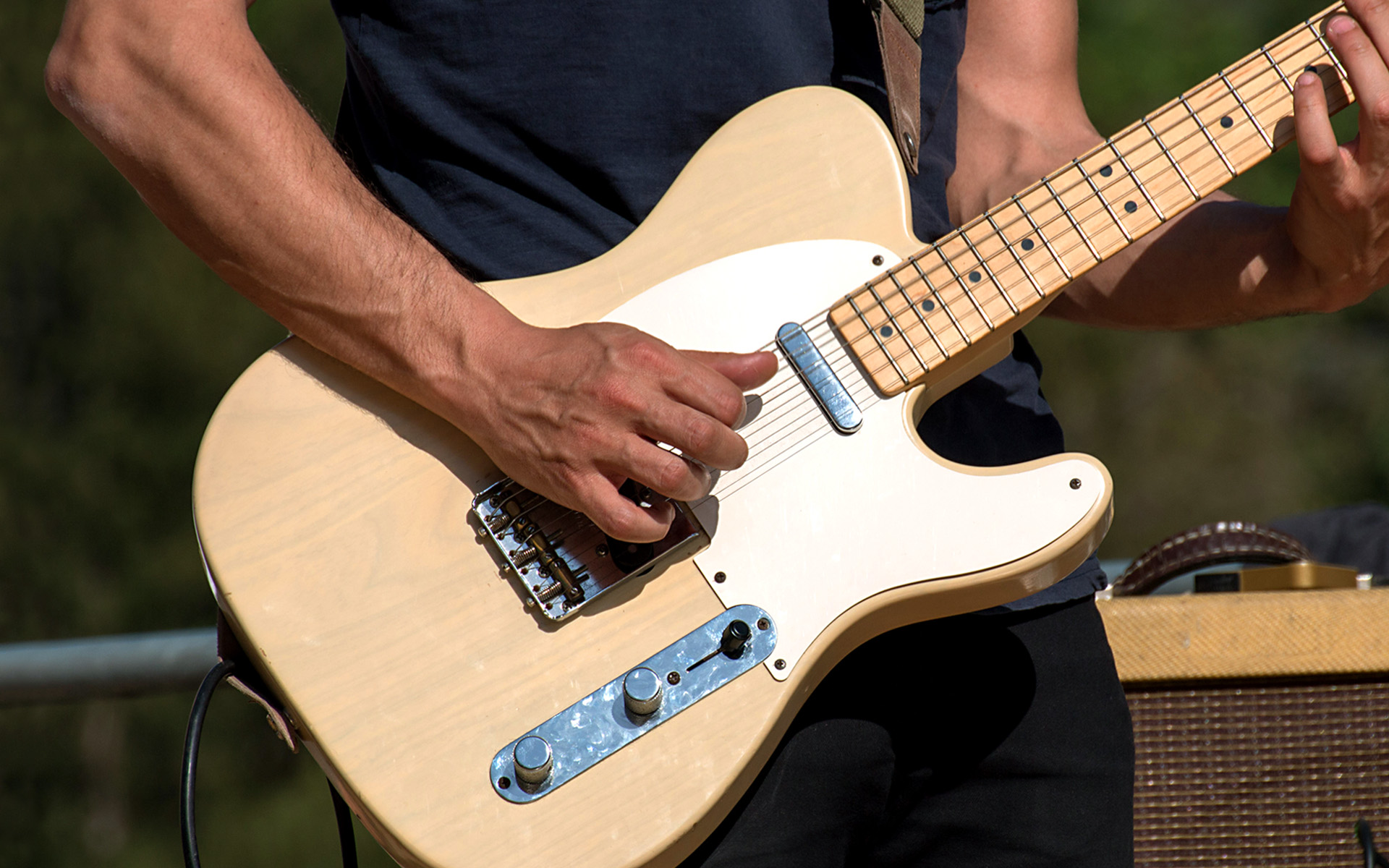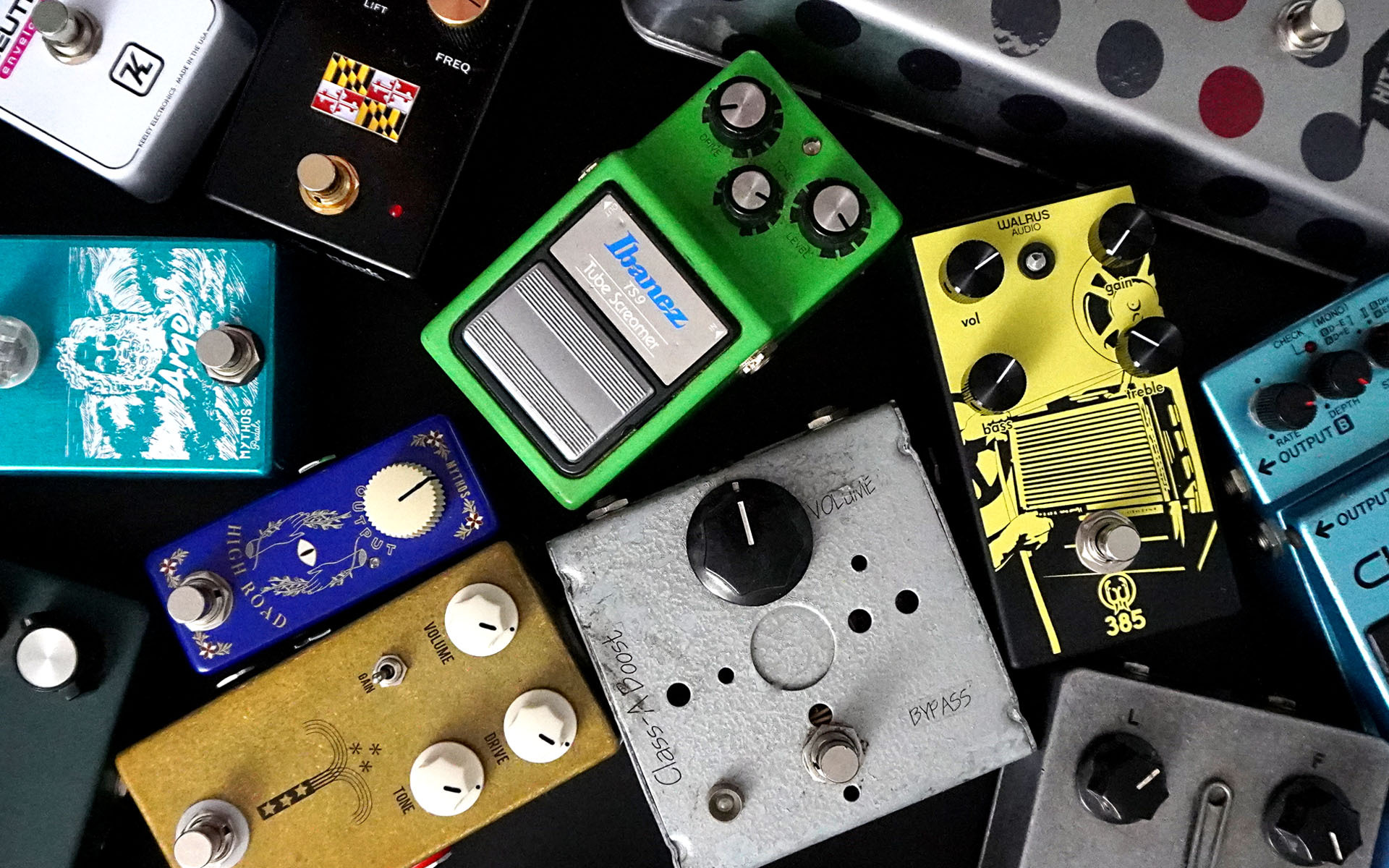If we believe what she wrote in her book’s introduction, Jane Miller’s office should get quite a bit neater and more organized soon. Since the early 1990s, she has taught guitar at Berklee, and watched her piles of exercises, etudes, and examples grow, piling high. But her hope has been that her process of organizing many of them and publishing them in a book Introduction to Jazz Guitar (Berklee Press, 2015), will help her tidy things up. We’ll see how that goes, or how long it lasts. For now, though, I am grateful that she took a few minutes to answer some of my lingering questions about playing jazz guitar.
JONATHAN: How is playing jazz guitar different from other styles
JANE: The biggest difference is the improvised nature of jazz. A player can have a plan in folk or rock and pretty much stick to it, often committing the performance to memory the way a classical player does. Folk and rock might have some leeway there, especially in solos, but jazz players have a lot more freedom of expression within any given tune. Jazz comping is very improvisatory in nature, for example. In playing the chords to support a melody or an improvised solo, we are reacting to what the melody player is doing. Since the melody player is being loose with their part, too, we’re all just having a conversation about the song.
People who are good at—or at least appreciate—the lively art of conversation will understand the concept of kicking an idea around, sometimes using humor, sometimes using sensitivity, but it’s always fresh. There’s no script to read when chatting among friends. That’s jazz. The interesting conversationalist will be quick- witted, will know and understand the topic, will leave room for someone else to speak and will be a good listener, and will surprise people, make them laugh or feel something. Some people are a natural at that. Playing jazz is just like that.
Just like in conversation, it helps to have a good vocabulary and a feel for the idioms. It helps to be free enough and confident enough to be playful with the language. Jazz guitarists need to learn a big collection of chords and scales. More importantly, jazz guitarists need to understand how to use those chords with tensions and substitutes and in the appropriate contexts. Folk music can be plenty beautiful with a few well-placed chords. Rock music works fine with triads or power chords, and in fact, might sound out of character with seventh chords, which are so prevalent in jazz. There is certainly room for crossover in every direction, but generally our use of language at a party is different from how we have a discussion at work.
Are some genres of jazz more guitar-friendly than others?
It seems to me that, historically, jazz guitarists have congregated in the mainstream realm. I don’t have any numbers on this, but I suppose it’s because from the 1930s and ’40s up until maybe the 1970s, you could follow a line from Charlie Christian to Wes Montgomery to Joe Pass to Jim Hall. Then when Fusion became popular, players fanned out stylistically to include rock elements, so now there’s a great big diverse field of players contributing ideas and sounds. The instrument itself has so much breadth that it’s possible for players of all styles to have their say. I think mainstream still tips the scale within jazz guitar for popularity, but there are progressive players tearing it up and finding new pathways for creating art all the time. It’s exciting.
Are some guitars better for jazz than others?
Choosing the right instrument is one of the joys of being a musician! And you can’t have too many guitars! Yes, the instrument makes a difference, and every player has his or her own preferences.
I have small hands, for example, so a small neck is essential for me. No matter how nice the top, sides, and back wood is and how gorgeous an instrument it is, if the neck is too big for me, I’m not going to make it sound good. I know other players for whom that is not such a big deal, and their first concern is the tone and wood type. I have a ¾ size Benedetto, the “Andy” model. I also have a Guild X-50 with a custom cutaway. Both of those guitars have the perfect neck for me, and they both sound amazing. So it’s a confluence of quality and size and shape for me.
All of my jazz guitars have been hollow bodies. I used to have a Strat, which of course, is the staple of rock guitars. It was fun and reliable, especially for outdoor shows, but I have learned something about myself: anything with more than one pickup and I probably won’t play it much after awhile. I have a hankering for a Telecaster, which of course, is a solid body with two pickups, so we’ll see how that turns out, but I really do have my hands full and I’m quite satisfied with my jazz boxes.
As for acoustic guitars, which are wonderful jazz instruments as well, I prefer spruce tops and rosewood back and sides for a warm tone. Again, it has to have a neck that is 1 11/16th inches at the nut or smaller for my hands. I adore Martins, and I also have a small Guild acoustic, which is a blast to play. Stylistically, if you just want to add some texture to a piece by strumming some chords without being too intricate, then a larger bodied acoustic with possibly high action will be okay. But if there are parts to play that involve single note fast lines or demanding chord stretches, than I want the smaller axe with low action.
The tradeoff is, lower action provides less projection, while high action will sing out and project more. With pickups as good as they are now, I’m not too concerned about that anymore. I just want it to feel comfortable.
What are the benefits of playing with a pick vs. playing finger style?
I learned finger style first, so that is what is more comfortable for me, but I use a pick sometimes for single note lines or to dig in more for comping a groove-oriented part. Finger style allows me to play skipped strings at the same time, and it allows me to have control over the choice of strings while comping to create moving lines. I learned folk style guitar first when I was a kid, so a lot of those patterns with my thumb and three fingers have stayed with me and have become mixed into my jazz playing, especially bossa nova style. I also feel like I can control bass lines better without a pick and can grab chords at the same time if I want to.
I’ve never gotten into the hybrid style of pick and fingers combined. Maybe that is for the same reason that I’ve never been comfortable with only using a thumb pick. I think there’s an imbalance between the pick and finger sound. Lots of great players do that, though, and really make it work. I like the warm sound of fingers and thumb on the strings versus a pick or even nails. But when I use a pick, it’s because I want to get that edge or that fluidity of playing a line with alternate picking.
What advice do you have for how to start improvising?
Listen. A lot. Then I really think it begins with scales. I recommend that my students learn patterns within scales so that they are not limited to starting and stopping on the first and last note of any given position. I also insist on hearing the scale as they practice in the context of the chords that they are matched with. For example, someone learning a C major scale for the first time should really record themselves playing a I VI II V in that key on their iPhone and then practice the scale over that. Suddenly, what was just a dry boring finger exercise is musical. I also suggest learning triads in small forms up and down the neck to use as reference points for soloing. Arpeggios come in handy, too. These are all good places to start, but listening has to happen for any of that to make any sense.
How does studying jazz improve your abilities if you still plan to primarily play other styles?
One of the cornerstones of jazz guitar is the chord melody solo. If a player can master a song by playing it completely, chords and melody together, then they know that tune thoroughly. They will be better equipped to say something about it in a solo. They will be better equipped to play an interesting break between verses as a performing solo artist, such as a singer songwriter. I think jazz technique can be demanding on the guitar. A metal player, who may have more single line chops that I could ever dream of, could learn more about chords and harmonic structure on the instrument by studying some basics concepts of jazz.
Players who mostly play rhythm guitar in a band could benefit from learning some scales and how to use them. Chops that are gained from doing the workouts of scale practice are good for the hands overall, so that will make for an easier time with chord changes. It’s all connected. And it’s all guitar. Even if a player is not planning to play jazz, they might learn some good tricks and some useful information about the layout of the instrument if they check out some jazz ideas.
EARN A PROFESSIONAL CERTIFICATE IN JAZZ GUITAR FROM BERKLEE ONLINE
Does playing jazz require a lot of knowledge of music theory?
Music theory helps, for sure. My thought process on the guitar relies on theory, especially while practicing and writing. But in the throes of playing, that’s not where my head will be anymore. Again, like conversation, it does help to study language and understand grammar and such. But when you’re shooting the breeze with someone, you don’t really have to think about it too much.
Having said that, I believe there are some wonderful players who haven’t gotten into too much theory. But they have great ears and they listen.
What is the most common mistake you see beginning jazz guitarists make, and what advice do you give them for overcoming it?
I see players trying to play too much at once. Like trying to impress with too many big words in one sentence. I get them to think about time more, and phrasing.
Do you have any common advice that you give your students that often leads to profound improvement? Something that is relatively easy, but makes a big difference?
I have an exercise which is fairly long that I give to my students which gets them playing eighth notes, triplets, and sixteenth notes each for one chorus, then finally a chorus of anything they want. They become super aware of their choices of rhythms after that.
I also have a rhythm trick for reading which I call the “Rudolph Rhythm,” which gets students to see the bigger picture while sight reading.
Those are both in the book.
Besides your guitar, what do you have in your guitar case right now, and why?
Extra strings, a tuner with a dead battery, a peg winder, my book, a few of my CDs, a cable, and a few business cards. There’s a pick stuck in the guitar’s strings. I realize now that I should have an extra cable in there, and I should probably replace that battery. That’s the guitar that I used for a jazz brunch gig today. I think I have some medication in one of my other cases.
It’s funny, I wrote a piece for Acoustic Guitar Magazine not long ago detailing what we should have in our cases, and recommended to always have an extra bag ready to bring along. It seems that’s a little hard to live up to.
Please point us to one of your favorite, most inspiring videos on YouTube of any classic jazz performance, by any artist.
Well, you could start here and make a day of it with any Wes Montgomery you can find. This one is “Impressions” by John Coltrane from the Live In Belgium 1965 performance.
STUDY JAZZ GUITAR WITH BERKLEE ONLINE





